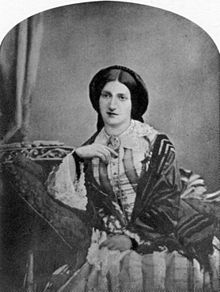So last weekend I decided to have a go at baking some English teacakes, the most quintessential of afternoon tea treats. Little did I know that working out what a teacake actually was would prove so difficult... but in the end I came up with a recipe that I am really pleased with.
 |
| Mrs Beeton: The addition of sugar and fruit is very nice... |
Writing in 1861 Mrs Beeton's basic recipe follows this older northern use of the term and doesn't have either sugar or currants in them, although she does say that they are 'very nice' with them added, making a more southern, modern teacake.
Two other interesting elements are the use of eggs (quite literally some do and some don't include them - really without rhyme or reason) and also the different types of fat they use. I went for butter in the end, as although the use of lard would certainly have made for a shorter mix, I could not quite bring myself to use it. Dan Lepard has a really interesting recipe on the Guardian website and suggests the use of white chocolate instead of lard... I thought about using his version, but I think it would make his already sweet recipe very sweet indeed.
However, what I did learn from Dan was that fat, sugar and even spices slow the yeast down, so much so that for his recipe he recommends 5tsp of dried yeast. Mine are not so sweet or fatty, so I have reduced this to 3tsp - but this is still much more than I would have added for bread.
 |
| The dough is set to rise twice, until doubled in size, which is around an hour each. |
' The right way to butter toasted teacakes (IMPORTANT): Toast bottoms and tops first; split and toast insides; lay (do not poke or spread) bits of butter on the lower half; cover with the top half; and invert. Keep hot for 3 minutes, then turn the right side up, polish the top with a suspicion of butter, cut into quarters, and send to the table. In this way the butter is evenly distributed and does not soak down into the bottom crust.’
 |
| Teacakes just before brushing with milk and baking. |
The recipe produces a light and fragrant teacake, but also one which has a depth of flavour and texture from the wholemeal flour, even more so if spelt is used. Please do try it and let me know what you think...
Teacake Recipe
8oz (250g) white flour
8oz (250g) wholemeal flour (wholegrain spelt is ideal)
2 oz (50g) butter
4 oz (125g) currants
1oz (25g) caster sugar
1 tsp of salt
3 tsp of yeast
1/2 pint of tepid milk
1/2 pint of tepid milk
Either:
1/2 tsp of cinnamon and dried ginger
1/2 to 1 tsp of allspice
or
1/2 tsp each of cinnamon, dried ginger and nutmeg
Mix together the milk and yeast and then set aside. Combine the flour, spices, salt and sugar before rubbing in the butter and finally adding the currents. Pour in the milk and yeast mixture to form a soft dough and then kneed until elastic and smooth.
Place the dough into a large bowl and cover with a damp tea towel, then place into a warm place until the mixture has doubled in size - I usually use the oven set to 30°c and this takes around an hour.
 |
| Cut the dough into 8 pieces, before setting to rise a second time. |
Finally brush the tops very gently with milk (this can be done before the final proving if you wish) and then place in the oven at 400°f or 200°c for around 20mins - until they are golden brown. Allow to cool on a wire rack.


plan to try these
ReplyDelete